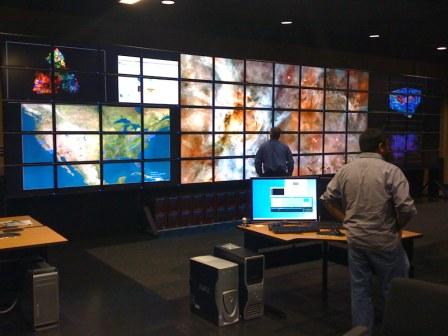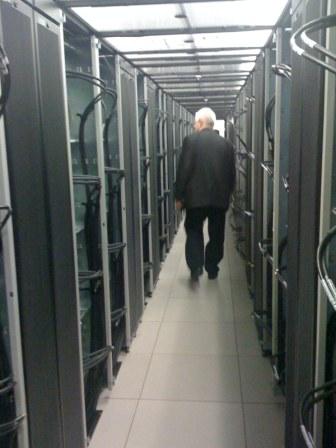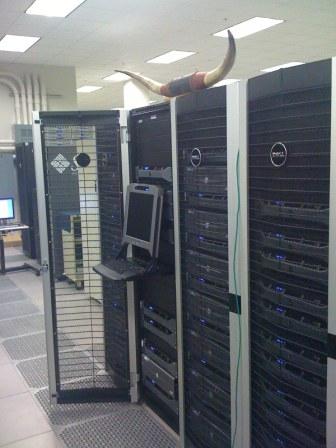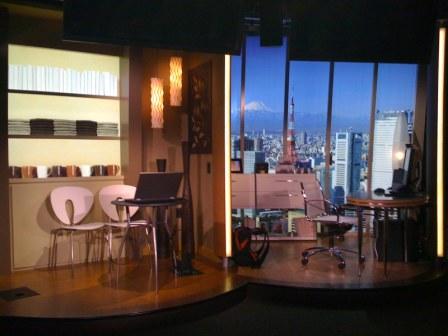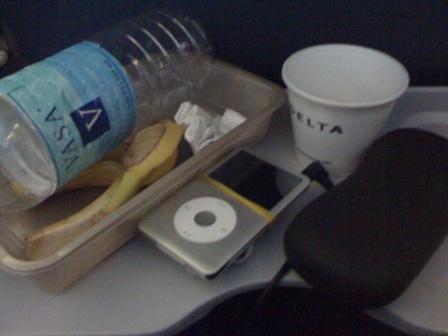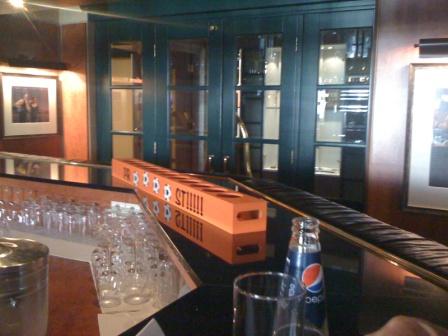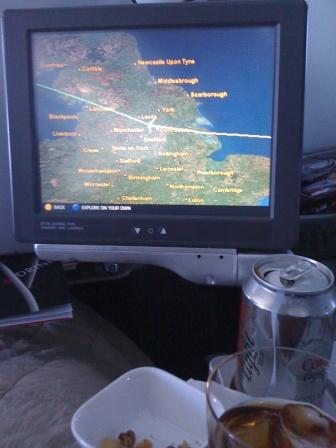
No sooner has the dust settled from Dells other recent acquisitions, its back to school shopping time and the latest bargain for the Round Rock Texas folks is bay (San Francisco) area storage vendor 3PAR for $1.15B. As a refresh, some of Dells more recent acquisitions including a few years ago $1.4B for EqualLogic, $3.9B for Perot systems not to mention Exanet, Kace and Ocarina earlier this year. For those interested, as of April 2010 reporting figures found here, Dell showed about $10B USD in cash and here is financial information on publicly held 3PAR (PAR).
Who is 3PAR
3PAR is a publicly traded company (PAR) that makes a scalable or clustered storage system with many built in advanced features typically associated with high end EMC DMX and VMAX as well as CLARiiON, in addition to Hitachi or HP or IBM enterprise class solutions. The Inserv (3PARs storage solution) combines hardware and software providing a very scalable solution that can be configured for smaller environments or larger enterprise by varying the number of controllers or processing nodes, connectivity (server attachment) ports, cache and disk drives.
Unlike EqualLogic which is more of a mid market iSCSI only storage system, the 3PAR Inserv is capable of going head to head with the EMC CLARiiON as well as DMC or VMAX systems that support a mix of iSCSI and Fibre Channel or NAS via gateway or appliances. Thus while there were occasional competitive situations between 3PAR and Dell EqualLogic, they for the most part were targeted at different market sectors or customers deployment scenarios.
What does Dell get with 3PAR?
- A good deal if not a bargain on one of the last new storage startup pure plays
- A public company that is actually generating revenue with a large and growing installed base
- A seasoned sales force who knows how to sell into the enterprise storage space against EMC, HP, IBM, Oracle/SUN, Netapp and others
- A solution that can scale in terms of functionality, connectivity, performance, availability, capacity and energy efficiency (PACE)
- Potential route to new markets where 3PAR has had success, or to bridge gaps where both have played and competed in the past
- Did I say a company with an established footprint of installed 3PAR Inserv storage systems and good list of marquee customers
- Ability to sell a solution that they own the intellectual property (IP) instead of that of partner EMC
- Plenty of IP that can be leveraged within other Dell solutions, not to mention combine 3PAR with other recently acquired technologies or companies.
On a lighter note, Dell picks up once again Marc Farley who was with them briefly after the EqualLogic acquisition who then departed to 3PAR where he became director of social media including launch of Infosmack on Storage Monkeys with co host Greg Knieriemen (@Knieriemen). Of course the twitter world and traditional coconut wires are now speculating where Farley will go next that Dell may end up buying in the future.
What does this mean for Dell and their data storage portfolio?
While in no ways all inclusive or comprehensive, table 1 provides a rough framework of different price bands, categories, tiers and market or application segments requiring various types of storage solutions where Dell can sell into.
| HP | Dell | EMC | IBM | Oracle/Sun |
Servers | Blade systems, rack mount, towers to desktop | Blade systems, rack mount, towers to desktop | Virtual servers with VMware, servers via vBlock servers via Cisco | Blade systems, rack mount, towers to desktop | Blade systems, rack mount, towers to desktop |
Services | HP managed services, consulting and hosting supplemented by EDS acquisition | Bought Perot systems (an EDS spin off/out) | Partnered with various organizations and services | Has been doing smaller acquisitions adding tools and capabilities to IBM global services | Large internal consulting and services as well as Software as a Service (SaaS) hosting, partnered with others |
Enterprise storage | XP (FC, iSCSI, FICON for mainframe and NAS with gateway) which is OEMed from Hitachi Japan parent of HDS | 3PAR (iSCSI and FICON or NAS with gateway) replaces EMC CLARiiON or perhaps rare DMX/VMAX at high end? | DMX and VMAX | DS8000 | Sun resold HDS version of XP/USP however Oracle has since dropped it from lineup |
Data footprint impact reduction | Dedupe on VTL via Sepaton plus HP developed technology or OEMed products | Dedupe in OEM or partner software or hardware solutions, recently acquired Ocarina | Dedupe in Avamar, Datadomain, Networker, Celerra, Centera, Atmos. CLARiiON and Celerra compression | Dedupe in various hardware and software solutions, source and target, compression with Storwize | Dedupe via OEM VTLs and other sun solutions |
Data preservation | Database and other archive tools, archive storage | OEM solutions from EMC and others | Centera and other solutions | Various hardware and software solutions | Various hardware and software solutions |
General data protection (excluding logical or physical security and DLP) | Internal Data Protector software plus OEM, partners with other software, various VTL, TL and target solutions as well as services | OEM and resell partner tools as well as Dell target devices and those of partners. Could this be a future acquisition target area? | Networker and Avamar software, Datadomain and other targets, DPA management tools and Mozy services | Tivoli suite of software and various hardware targets, management tools and cloud services | Various software and partners tools, tape libraries, VTLs and online storage solutions |
Scale out, bulk, or clustered NAS | eXtreme scale out, bulk and clustered storage for unstructured data applications | Exanet on Dell servers with shared SAS, iSCSI or FC storage | Celerra and ATMOS | IBM SONAS or N series (OEM from NetApp) | ZFS based solutions including 7000 series |
General purpose NAS | Various gateways for EVA or MSA or XP, HP IBRIX or Polyserve based as well as Microsoft WSS solutions | EMC Celerra, Dell Exanet, Microsoft WSS based. Acquisition or partner target area? | Celerra | N Series OEMed from Netapp as well as growing awareness of SONAS | ZFS based solutions. Whatever happened to Procom? |
Mid market multi protocol block | EVA (FC with iSCSI or NAS gateways), LeftHand (P Series iSCSI) for lowered of this market | 3PAR (FC and iSCSI, NAS with gateway) for mid to upper end of this market, EqualLogic (iSCSI) for the lower end of the market, some residual EMC CX activity phases out over time? | CLARiiON (FC and iSCSI with NAS via gateway), Some smaller DMX or VMAX configurations for mid to upper end of this market | DS5000, DS4000 (FC and iSCSI with NAS via a gateway) both OEMed from LSI, XIV and N series (Netapp) | 7000 series (ZFS and Sun storage software running on Sun server with internal storage, optional external storage) 6000 series |
Scalable SMB iSCSI | LeftHand (P Series) | EqualLogic | Celerra NX, CLARiiON AX/CX | XIV, DS3000, N Series | 2000
7000 |
Entry level shared block | MSA2000 (iSCSI, FC, SAS) | MD3000 (iSCSI, FC, SAS) | AX (iSCSI, FC) | DS3000 (iSCSI, FC, SAS), N Series (iSCSI, FC, NAS) | 2000
7000 |
Entry level unified multi function | X (not to be confused with eXtreme series) HP servers with Windows Storage Software | Dell servers with Windows Storage Software or EMC Celerra | Celerra NX, Iomega | xSeries servers with Microsoft or other software installed | ZFS based solutions running on Sun servers |
Low end SOHO | X (not to be confused with eXtreme series) HP servers with Windows Storage Software | Dell servers with storage and Windows Storage Software. Future acqustion area perhaps? | Iomega | | |
Table 1: Sampling of various tiers, architectures, functionality and storage solution options
Clarifying some of the above categories in table 1:
Servers: Application servers or computers running Windows, Linux, HyperV, VMware or other applications, operating systems and hypervisors.
Services: Professional and consulting services, installation, break fix repair, call center, hosting, managed services or cloud solutions
Enterprise storage: Large scale (hundreds to thousands of drives, many front end as well as back ports, multiple controllers or storage processing engines (nodes), large amount of cache and equally strong performance, feature rich functionality, resilient and scalable.
Data footprint impact reduction: Archive, data management, compression, dedupe, thin provision among other techniques. Read more here and here.
Data preservation: Archiving for compliance and non regulatory applications or data including software, hardware, services.
General data protection: Excluding physical or logical data security (firewalls, dlp, etc), this would be backup/restore with encryption, replication, snapshots, hardware and software to support BC, DR and normal business operations. Read more about data protection options for virtual and physical storage here.
Scale out NAS: Clustered NAS, bulk unstructured storage, cloud storage system or file system. Read more about clustered storage here. HP has their eXtreme X series of scale out and bulk storage systems as well as gateways. These leverage IBRIX and Polyserve which were bought by HP as software, or as a solution (HP servers, storage and software), perhaps with optional data reduction software such as Ocarina OEMed by Dell. Dell now has Exanet which they bought recently as software, or as a solution running on Dell servers, with either SAS, iSCSI or FC back end storage plus optional data footprint reduction software such as Ocarina. IBM has GPFS as a software solution running on IBM or other vendors servers with attached storage, or as a solution such as SONAS with IBM servers running software with IBM DS mid range storage. IBM also OEMs Netapp as the N series.
General purpose NAS: NAS (NFS and CIFS or optional AFP and pNFS) for everyday enterprise (or SME/SMB) file serving and sharing
Mid market multi protocol block: For SMB to SME environments that need scalable shared (SAN) scalable block storage using iSCSI, FC or FCoE
Scalable SMB iSCSI: For SMB to SME environments that need scalable iSCSI storage with feature rich functionality including built in virtualization
Entry level shared block: Block storage with flexibility to support iSCSI, SAS or Fibre Channel with optional NAS support built in or available via a gateway. For example external SAS RAID shared storage between 2 or more servers configured in a HyeprV or VMware clustered that do not need or can afford higher cost of iSCSI. Another example would be shared SAS (or iSCSI or Fibre Channel) storage attached to a server running storage software such as clustered file system (e.g. Exanet) or VTL, Dedupe, Backup, Archiving or data footprint reduction tools or perhaps database software where higher cost or complexity of an iSCSI or Fibre Channel SAN is not needed. Read more about external shared SAS here.
Entry level unified multifunction: This is storage that can do block and file yet is scaled down to meet ease of acquisition, ease of sale, channel friendly, simplified deployment and installation yet affordable for SMBs or larger SOHOs as well as ROBOs.
Low end SOHO: Storage that can scale down to consumer, prosumer or lower end of SMB (e.g. SOHO) providing mix of block and file, yet priced and positioned below higher price multifunction systems.
Wait a minute, are that too many different categories or types of storage?
Perhaps, however it also enables multiple tools (tiers of technologies) to be in a vendors tool box, or, in an IT professionals tool bin to address different challenges. Lets come back to this in a few moments.
Some Industry trends and perspectives (ITP) thoughts:
How can Dell with 3PAR be an enterprise play without IBM mainframe FICON support?
Some would say forget about it, mainframes are dead thus not a Dell objective even though EMC, HDS and IBM sell a ton of storage into those environments. However, fair enough argument and one that 3PAR has faced for years while competing with EMC, HDS, HP, IBM and Fujitsu thus they are versed in how to handle that discussion. Thus the 3PAR teams can help the Dell folks determine where to hunt and farm for business something that many of the Dell folks already know how to do. After all, today they have to flip the business to EMC or worse.
If truly pressured and in need, Dell could continue reference sales with EMC for DMX and VMAX. Likewise they could also go to Bustech and/or Luminex who have open systems to mainframe gateways (including VTL support) under a custom or special solution sale. Ironically EMC has OEMed in the past Bustech to transform their high end storage into Mainframe VTLs (not to be confused with Falconstor or Quantum for open system) as well as Datadomain partnered with Luminex.
BTW, did you know that Dell has had for several years a group or team that handles specialized storage solutions addressing needs outside the usual product portfolio?
Thus IMHO Dells enterprise class focus will be that for open systems large scale out where they will compete with EMC DMX and VMAX, HDS USP or their soon to be announced enhancements, HP and their Hitachi Japan OEMed XP, IBM and the DS8000 as well as the seldom heard about yet equally scalable Fujitsu Eternus systems.
Why only 1.15B, after all they paid 1.4B for EqualLogic?
IMHO, had this deal occurred a couple of years ago when some valuations were still flying higher than today, and 3PAR were at their current sales run rate, customer deployment situations, it is possible the amount would have been higher, either way, this is still a great value for both Dell and 3PAR investors, customers, employees and partners.
Does this mean Dell dumps EMC?
Near term I do not think Dell dumps the EMC dudes (or dudettes) as there is still plenty of business in the mid market for the two companies. However, over time, I would expect that Dell will unleash the 3PAR folks into the space where normally a CLARiiON CX would have been positioned such as deals just above where EqualLogic plays, or where Fibre Channel is preferred. Likewise, I would expect Dell to empower the 3PAR team to go after additional higher end deals where a DMX or VMAX would have been the previous option not to mention where 3PAR has had success.
This would also mean extending into sales against HP EVA and XPs, IBM DS5000 and DS8000 as well as XIV, Oracle/Sun 6000 and 7000s to name a few. In other words there will be some spin around coopition, however longer term you can read the writing on the wall. Oh, btw, lest you forget, Dell is first and foremost a server company who now is getting into storage in a much bigger way and EMC is first and foremost a storage company who is getting into severs via VMware as well as their Cisco partnerships.
Are shots being fired across each other bows? I will leave that up to you to speculate.
Does this mean Dell MD1000/MD3000 iSCSI, SAS and FC disappears?
I do not think so as they have had a specific role for entry level below where the EqualLogic iSCSI only solution fits providing mixed iSCSI, SAS and Fibre Channel capabilities to compete with the HP MSA2000 (OEMed by Dothill) and IBM DS3000 (OEMed from LSI). While 3PAR could be taken down into some of these markets, which would also potentially dilute the brand and thus premium margin of those solutions.
Likewise, there is a play with server vendors to attach shared SAS external storage to small 2 and 4 node clusters for VMware, HyperV, Exchange, SQL, SharePoint and other applications where iSCSI or Fibre Channel are to expensive or not needed or where NAS is not a fit. Another play for the shared external SAS attached is for attaching low cost storage to scale out clustered NAS or bulk storage where software such as Exanet runs on a Dell server. Take a closer look at how HP is supporting their scale out as well as IBM and Oracle among others. Sure you can find iSCSI or Fibre Channel or even NAS back end to file servers. However growing trend of using shared SAS.
Does Dell now have too many different storage systems and solutions in their portfolio?
Possibly depending upon how you look at it and certainly the potential is there for revenue prevention teams to get in the way of each other instead of competing with external competitors. However if you compare the Dell lineup with those of EMC, HP, IBM and Oracle/Sun among others, it is not all that different. Note that HP, IBM and Oracle also have something in common with Dell in that they are general IT resource providers (servers, storage, networks, services, hardware and software) as compared to other traditional storage vendors.
Consequently if you look at these vendors in terms of their different markets from consumer to prosumer to SOHO at the low end of the SMB to SME that sits between SMB and enterprise, they have diverse customer needs. Likewise, if you look at these vendors server offerings, they too are diverse ranging from desktops to floor standing towers to racks, high density racks and blade servers that also need various tiers, architectures, price bands and purposed storage functionality.
What will be key for Dell to make this all work?
The key for Dell will be similar to that of their competitors which is to clearly communicate the value proposition of the various products or solutions, where, who and what their target markets are and then execute on those plans. There will be overlap and conflict despite the best spin as is always the case with diverse portfolios by vendors.
However if Dell can keep their teams focused on expanding their customer footprints at the expense of their external competition vs. cannibalizing their own internal product lines, not to mention creating or extending into new markets or applications. Consequently Dell now has many tools in their tool box and thus need to educate their solution teams on what to use or sell when, where, why and how instead of just having one tool or a singular focus. In other words, while a great solution, Dell no longer has to respond with the solution to everything is iSCSI based EqualLogic.
Likewise Dell can leverage the same emotion and momentum behind the EqualLogic teams to invigorate and unleash the best with 3PAR teams and solution into or onto the higher end of the SMB, SME and enterprise environments.
Im still thinking that Exanet is a diamond in the rough for Dell where they can install the clustered scalable NAS software onto their servers and use either lower end shared SAS RAID (e.g. MD3000), or iSCSI (MD3000, EqualLogic or 3PAR) or higher end Fibre Channel with 3PAR) for scale out, cloud and other bulk solutions competing with HP, Oracle and IBM. Dell still has the Windows based storage server for entry level multi protocol block and file capabilities as well as what they OEM from EMC.
Is Dell done shopping?
IMHO I do not think so as there are still areas where Dell can extend their portfolio and not just in storage. Likewise there are still some opportunities or perhaps bargains out there for fall and beyond acquisitions.
Does this mean that Dell is not happy with EqualLogic and iSCSI
Simply put from my perspective talking with Dell customers, prospects, and partners and seeing them all in action nothing could be further from Dell not being happy with iSCSI or EqualLogic. Look at this as being a way to extend the Dell story and capabilities into new markets, granted the EqualLogic folks now have a new sibling to compete with internal marketing and management for love and attention.
Isnt Dell just an iSCSI focused company?
A couple of years I was quoted in one of the financial analysis reports as saying that Dell needed to remain open to various forms of storage instead of becoming singularly focused on just iSCSI as a result of the EqualLogic deal. I standby that statement in that Dell to be a strong enterprise contender needs to have a balanced portfolio across different price or market bands, from block to file, from shared SAS to iSCSI to Fibre Channel and emerging FCoE.
This also means supporting traditional NAS across those different price band or market sectors as well as support for emerging and fast growing unstructured data markets where there is a need for scale out and bulk storage. Thus it is great to see Dell remaining open minded and not becoming singularly focused on just iSCSI instead providing the right solution to meet their diverse customer as well as prospect needs or opportunities.
While EqualLogic was and is a very successfully iSCSI focused storage solution not to mention one that Dell continues to leverage, Dell is more than just iSCSI. Take a look at Dells current storage line up as well as up in table 1 and there is a lot of existing diversity. Granted some of that current diversity is via partners which the 3PAR deal helps to address. What this means is that iSCSI continues to grow in popularity however there are other needs where shared SAS or Fibre Channel or FCoE will be needed opening new markets to Dell.
Bottom line and wrap up (for now)
This is a great move for Dell (as well as 3PAR) to move up market in the storage space with less reliance on EMC. Assuming that Dell can communicate the what to use when, where, why and how to both their internal teams, partners as well as industry and customers not to mention then execute on, they should have themselves a winner.
Will this deal end up being an even better bargain than when Dell paid $1.4B for EqualLogic?
Not sure yet, it certainly has potential if Dell can execute on their plans without losing momentum in any other their other areas (products).
Whats your take?
Cheers gs
Greg Schulz – Author The Green and Virtual Data Center (CRC) and Resilient Storage Networks (Elsevier)
twitter @storageio
Here are some related links to read more
























